by Maia Tanedo
Back in 2013, I wrote an article for eBON titled 10 Most Common Urban Birds and have gotten quite a lot of comments throughout the years about how useful the information was. Now, almost ten years after, I’m writing a similar article, this time about the 5 Most Common Urban Migratory Birds in the Philippines. Before we get on with the actual list, let me give a short explanation about bird migration, particularly in the Philippines.
Bird migration is the regular seasonal movement of our feathered friends following specific routes called flyways. This is a natural occurrence wherein birds escape harsh cold winters in their breeding grounds (usually in the northern part of the world) in search of more suitable habitats and sources of food (towards the southern part of the world.) The Philippines is located smack in the middle of one of the nine major flyways of the world, the East Asian-Australasian Flyway (EAAF), which stretches from East Russia and even Alaska, all the way down to Australia and New Zealand. There are a total of 22 countries that belong to the EAAF.
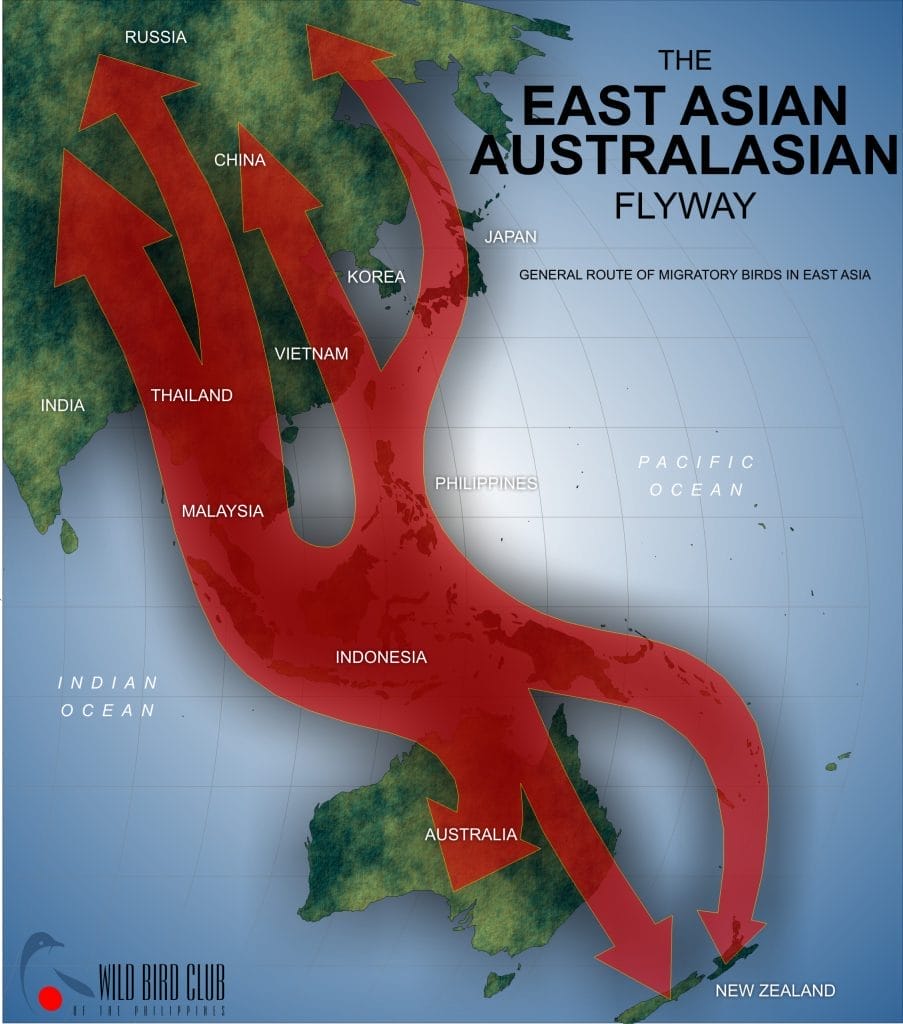
Looking at the map above, and if you think like a migrating bird, the Philippines offers the perfect stopover area after flying over kilometers of ocean as part of the trip all the way south (and back north when migration season comes to a close.) From wetlands and coastal areas to forests, mountains, and even urban areas, our country becomes the temporary home of thousands of migrating birds from the months of September to March. You may think that you need to look far to be able to see some of these awesome migrants, but you may be surprised that our cities and urban areas also serve as temporary homes for these birds while they move from one area to the next in their migratory journey.
So here is my list of 5 most common migrants you can see in urban areas in our country. A big thank you to all the photo contributors for granting permission to use your awesome photos and videos!
1. Brown Shrike Lanius cristatus
The Brown Shrike is said to be one of the first migrants to arrive in the Philippines when migration season starts around the month of September. Locally called “tarat”, farmers associate the arrival of these birds with the changing of seasons, rightfully so because the migrants arrive the same time the cool amihan or Northeast monsoon wind starts blowing in. Birders have long since had this informal “contest” on who gets to report the first Brown Shrike of the season. Usually, you can tell they have arrived because the other usual birds in your neighborhood are suddenly quiet and you can hear the Brown Shrike’s call announcing its presence. Listen to a Brown Shrike here: https://xeno-canto.org/387695
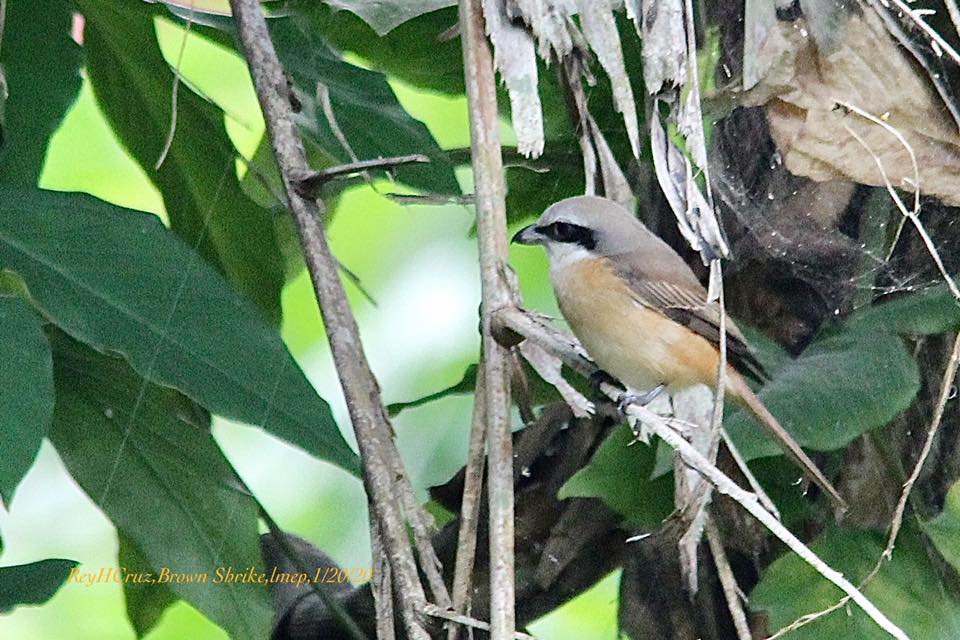
Photo by Reynaldo Cruz
Fun Fact: Notoriously known as “butcher birds”, Brown Shrikes have been observed to impale their prey on thorny branches, curating their own larder of sorts made up of lizards, frogs, and small birds and snakes. Check out this video by Mon Gayas (Ser Mountaineer) of a Brown Shrike with its unfortunate prey.
Video by Mon Gayas
2. Common Kingfisher Alcedo atthis
This little bird is one of the smaller migrants that visit the Philippines. They can be found near clean, still waters waiting on low perches before diving quickly into the water to catch small fish. They can skim over the water’s surface when moving from one perch to another with a high pitched call. Usually you can hear them calling and see a flash of bright blue darting across the water. Listen to its flight call here https://xeno-canto.org/211675. Males have all black bills while females have two-tones bills (upper mandible is black, and lower mandible is orange.)
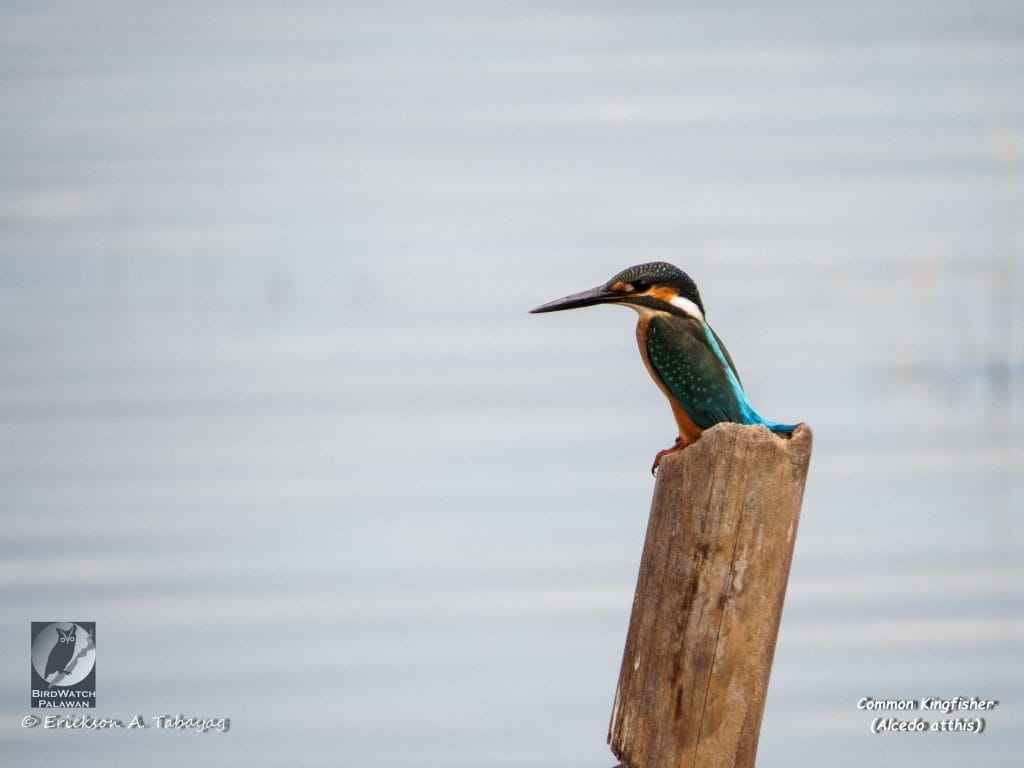
Photo by Erickson Tabayag
Fun Fact: Common Kingfishers have iridescent feathers meaning their color may appear different depending on the light and from what angle you are viewing it from! It is for this reason that sometimes they appear blue, sometimes greenish, sometimes turquoise! Amazing, right?
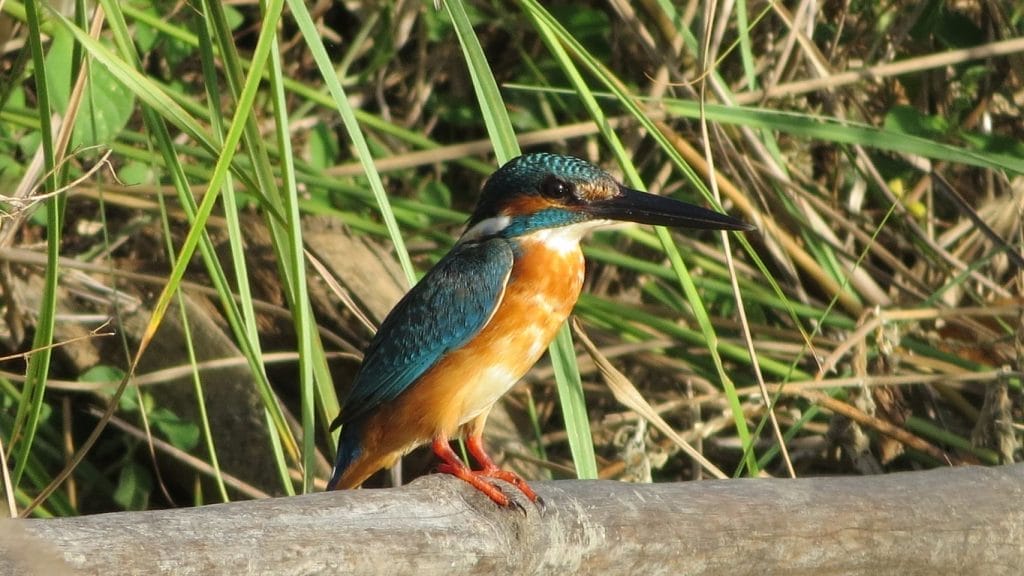
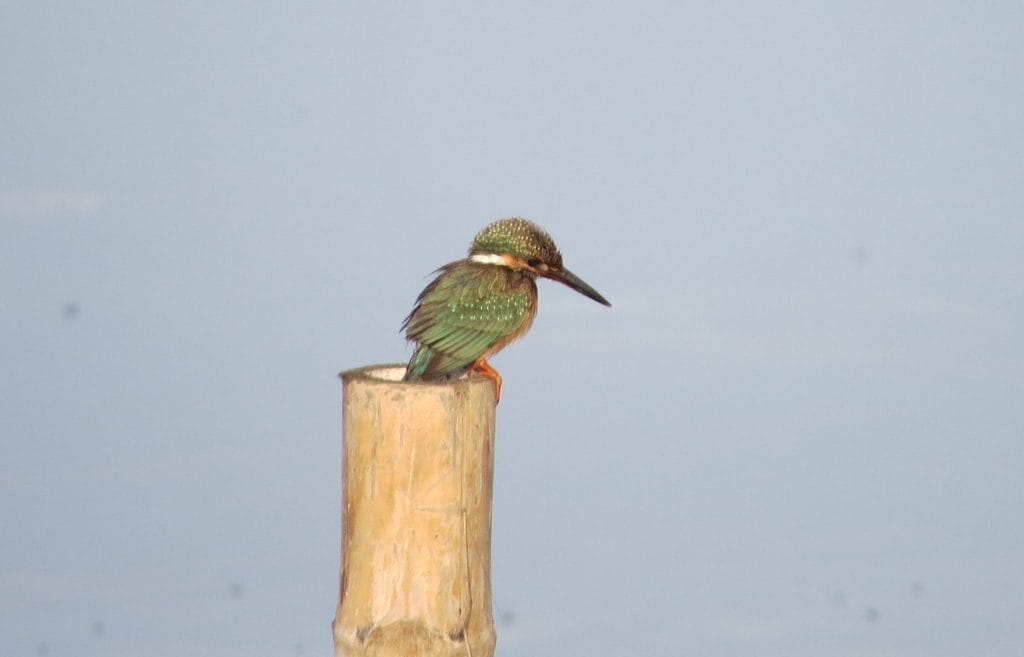
Two different Common Kingfishers with seemingly different colors. Photos by Mike Lu
3. Whiskered Tern Chlidonias hybrida
These white graceful fliers populate rivers and wetlands during the migration season. Whiskered Terns can be observed flying over water, sometimes even hovering, before diving for small fish to eat. They can also be seen perched on wires near bodies of water. Some people wonder why they “come and go”, appearing in big numbers and then disappearing after a while. This is what bird migration is.

Photo by Ravi Iyengar
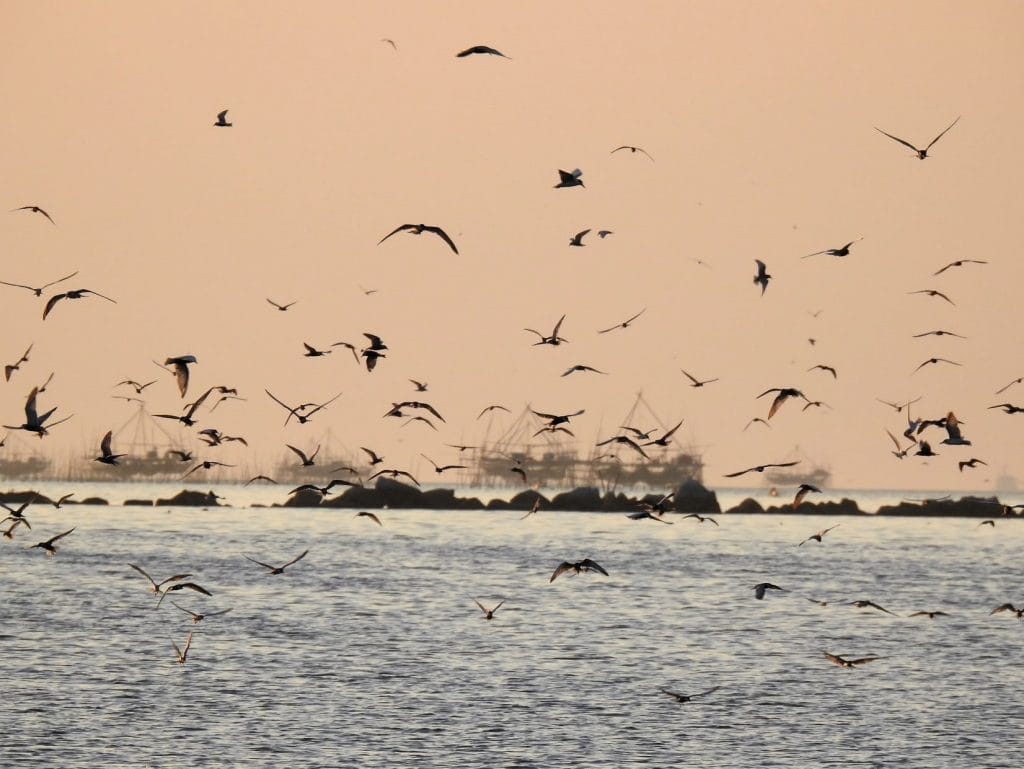
Photo by Mike Lu
Fun Fact: Most birds have different kinds of plumage. One of these is breeding plumage. Usually, males change from their drab non-breeding plumage to their more flashy and colorful breeding plumage. This change happens for the males to attract mates. Whiskered Terns are one species that have a very noticeable breeding plumage as seen in the picture below.
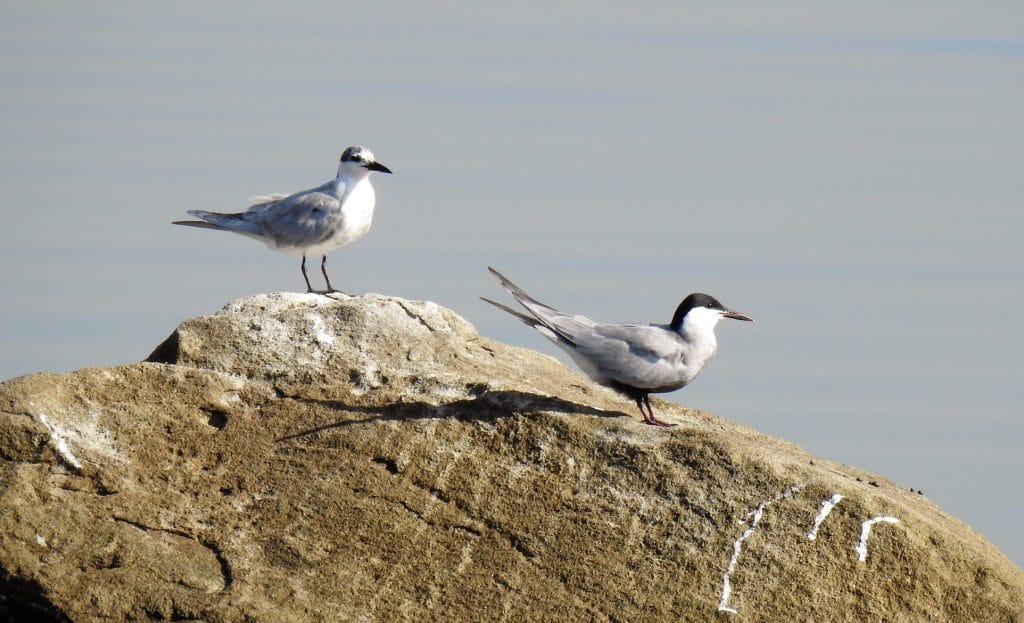
“work from home” non-breeding plumage (bird on left)
Photo by Mike Lu
4. Barn Swallow Hirundo rustica
Barn Swallows are abundant migrants to the Philippines. And I mean abundant! Large flocks of Barn Swallows have notoriously set up camp in some cities in the Philippines during their migration. They could be seen perched and roosting on electric wires on busy streets and malls in the evening, and as you can imagine, leaving quite a mess down below. Some cities have treated them with welcoming arms, but some have sadly treated them as pests.

that tells it apart from the resident Pacific Swallow.
Photo by Reynaldo Cruz
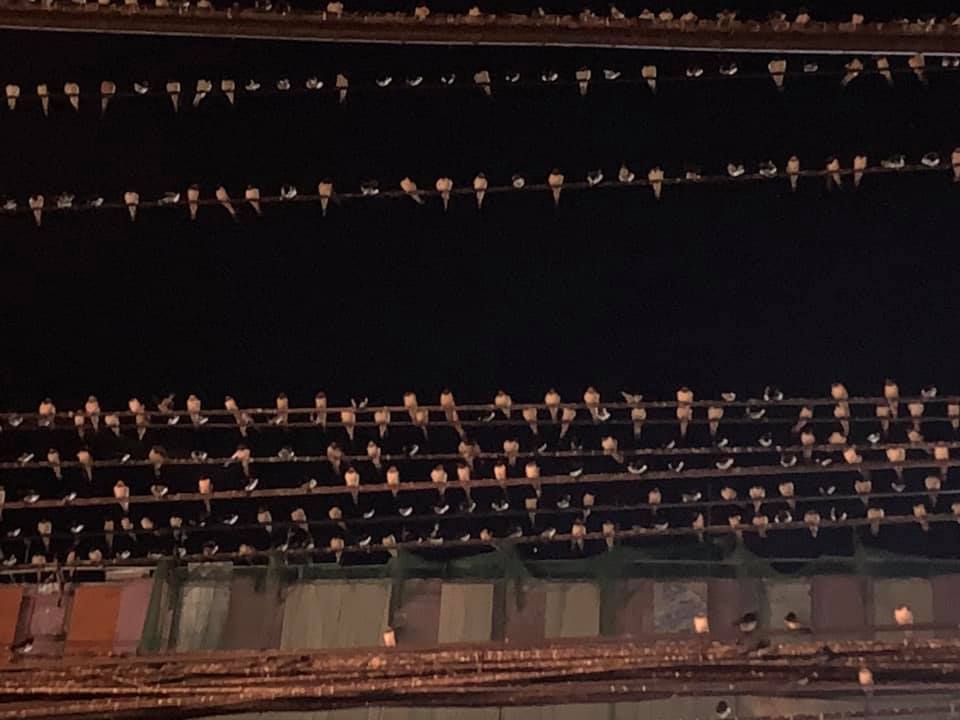
Photo by Bayani Barcenas
Fun Fact: Why do they roost in such highly populated areas like malls and city centers? Barn Swallows are not interested in us humans and our malls, but they are insectivores, meaning their diet consists of insects. They are most probably drawn to such places since these are bright areas which also attract their prey: lots of insects.
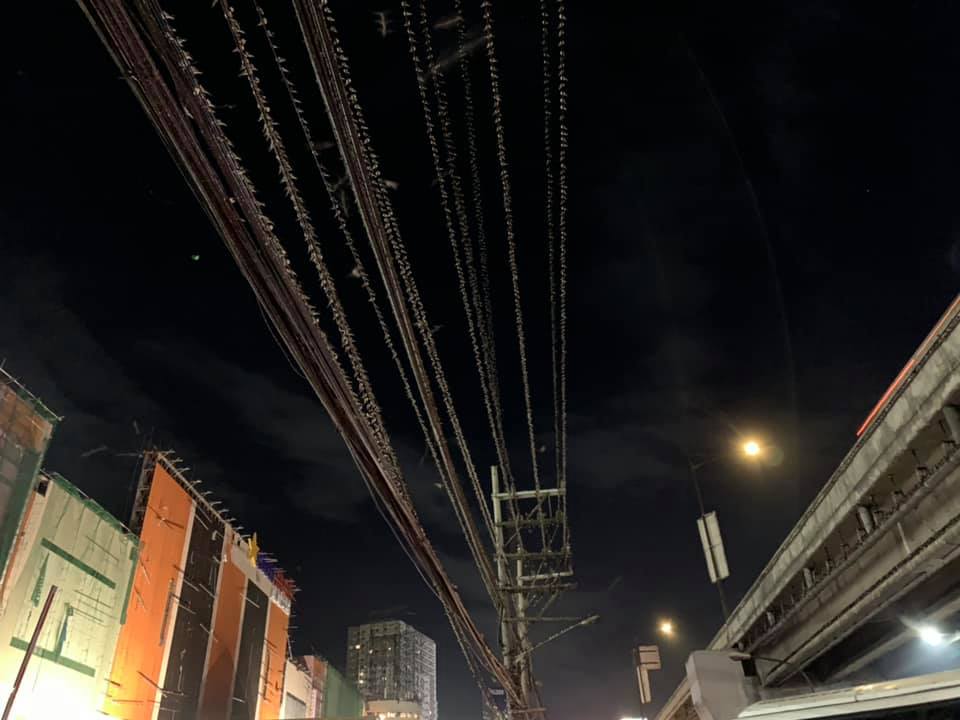
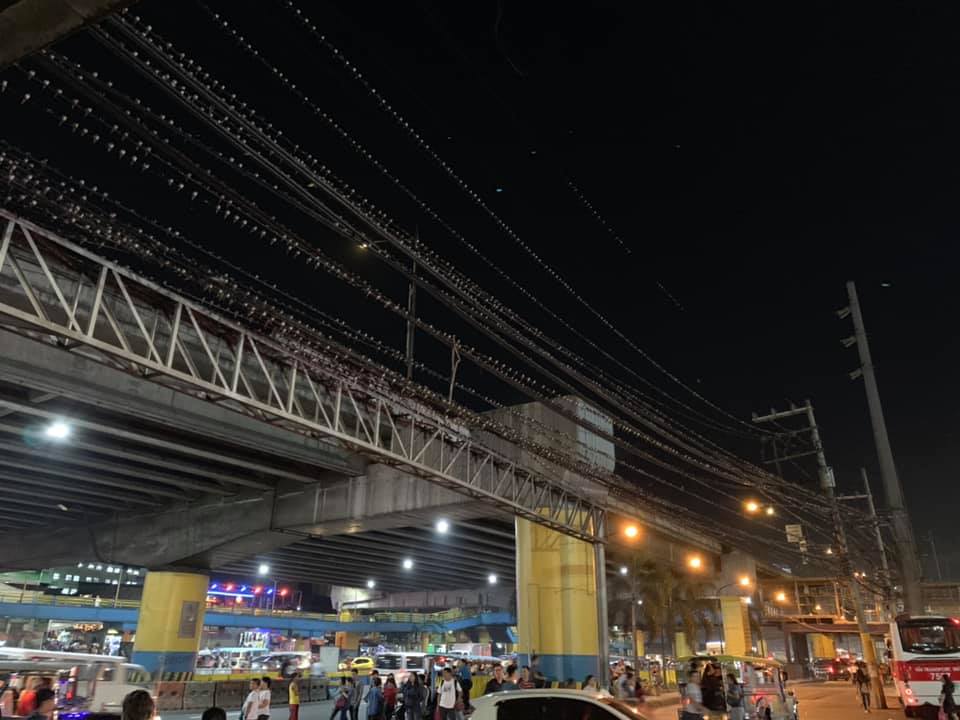
The hundreds of Barn Swallows outside Starmall Alabang usually go unnoticed by people who continue with their activities under the roost. Photo by Bayani Barcenas
5. Peregrine Falcon Falco peregrinus calidus
Oh yes, the world’s fastest flier migrates to the Philippines AND can be seen in urban areas! These birds of prey have been reported on office building ledges, outside condominium windows, and even telecommunications towers. Again, the presence of yummy prey attracts these birds to temporarily share our urban neighborhoods, mostly pigeons. They are probably the bane of pigeon owners, but thankfully they are only here for a few weeks or months before they move on with their migration.
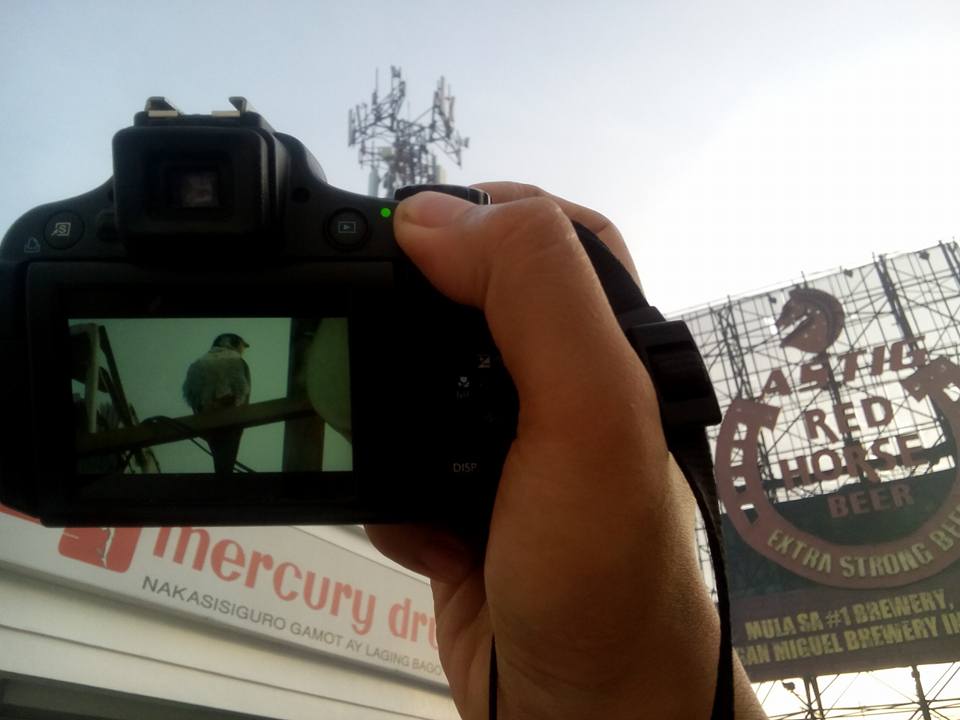
(this is not a sponsored post by a drugstore or beer brand!)
Photo by Fredd Ochavo
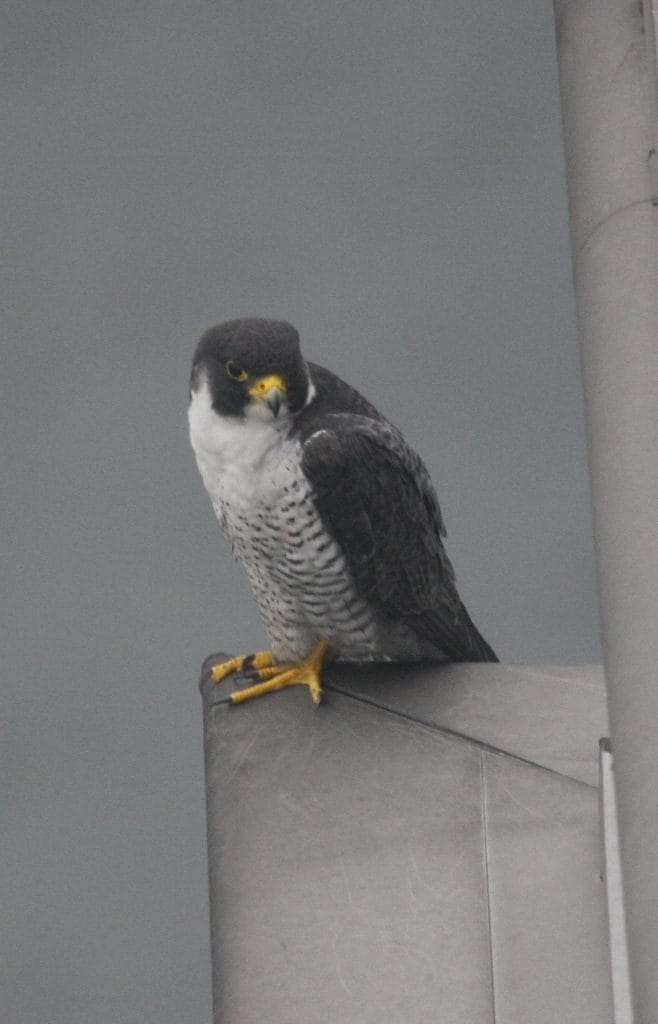
photographed from bedroom window.
Photo by Mark Wallbank
Fun Fact: The migrant Peregrine Falcon has a very handsome, um “cousin” who resides in the Philippines. The resident ernesti race of Peregrine Falcon mostly keeps to more natural dwellings though, such as cliffs and ravines. This resident subspecies has an all-black head compared to the migratory subspecies which has a patch of white on the sides of its head.
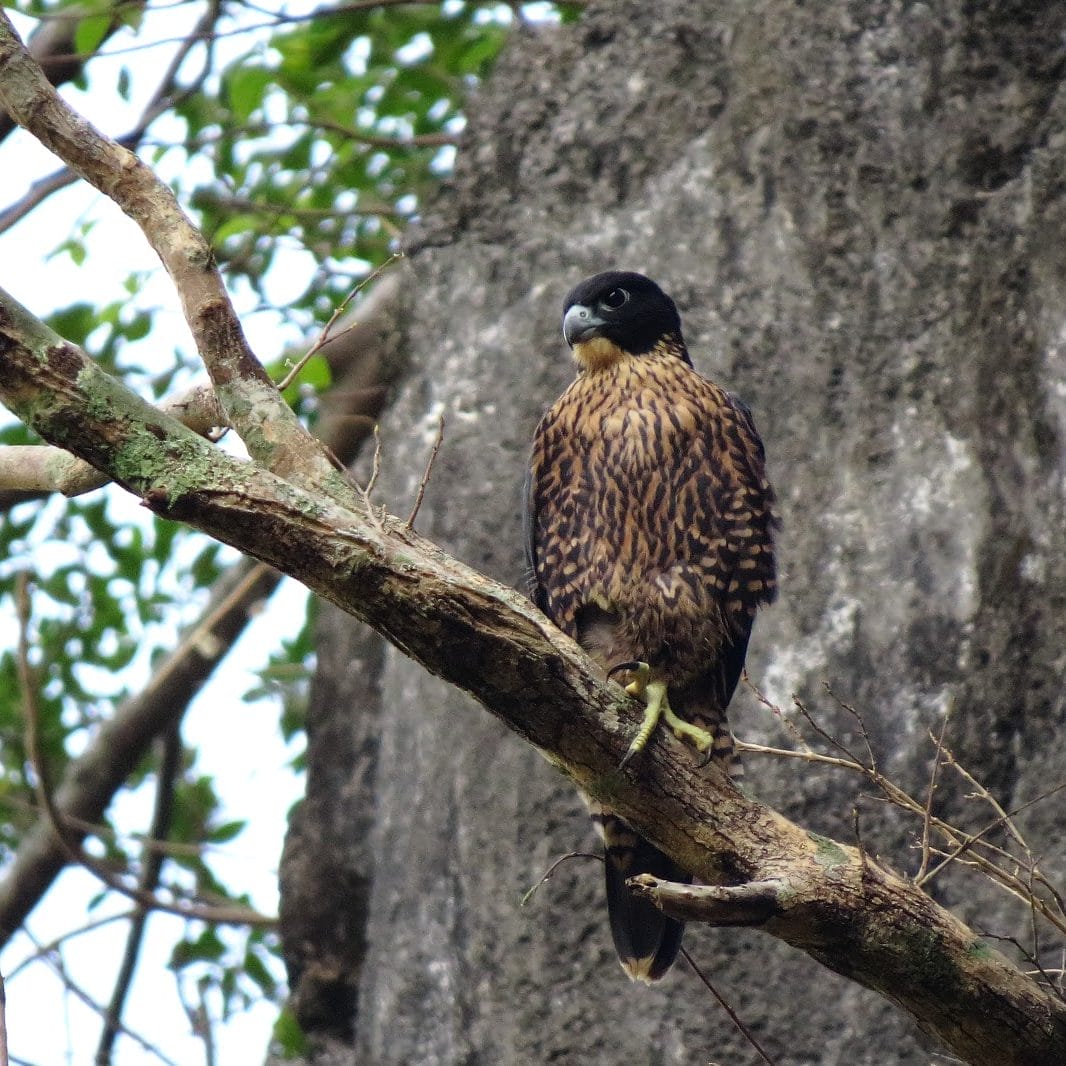
The resident subspecies of Peregrine Falcon (Falco peregrinus ernesti) in the mountains of Montalban.
Photo by Maia Tanedo
So there you have it! My list of top 5 migratory birds you can spot in urban areas in the Philippines. I hope you are lucky enough to see them all soon and add them to your life list. Of course, there are so much more migratory birds that winter in the Philippines, given our location and natural resources! Before you react and ask about why this bird or that did not make it to the list…. another list on migrants is coming up soon! Until then, happy birding!

Pingback:WBCP Coloring Pages: Common Kingfisher and Whiskered Tern – Wild Bird Club of the Philippines
Pingback:WBCP Coloring Pages: Common Kingfisher and Whiskered Tern - Wild Bird Club of the Philippines
If you look at maps of the borders of countries around the world, you will find there is a glaring error (of EAAF Map by Jon Villasper) in that the locations of Vietnam, China, and Korea are not marked with their national borders, which is unprofessional for a geography researcher to produce